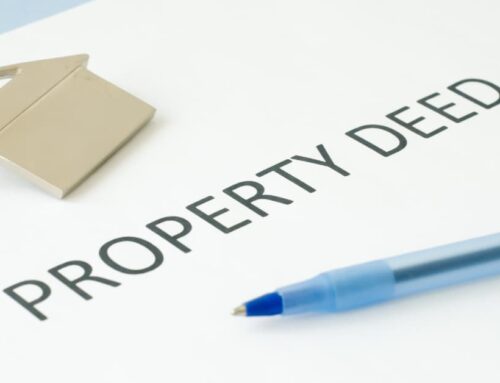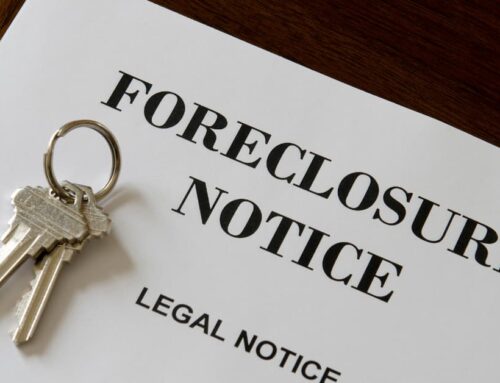Looking to build serious wealth through real estate? Commercial property investment offers annual returns of 9-12% compared to residential properties’ typical 3-6%. But here’s the reality – success requires understanding both investment fundamentals and critical legal protections that can make or break your financial future.
This guide, developed with insights from experienced commercial real estate attorneys, combines essential investment strategies with legal safeguards to help you navigate commercial property purchases with confidence and avoid costly mistakes that derail countless investors.
What is Commercial Real Estate and Why Should You Consider It?
Commercial real estate (CRE) refers to income-generating properties used for business purposes. Unlike residential real estate, these properties are specifically designed to produce cash flow through rental payments while building long-term wealth.
Think of it this way: while residential properties house people, commercial properties house businesses, and businesses typically pay higher rents for longer periods.
Key Investment Advantages You Need to Know
Commercial real estate offers several compelling advantages over residential investments that can significantly boost your returns and simplify property management:
Higher Income Potential: Commercial properties generate substantially more rental income due to larger spaces, longer lease terms, and professional tenant relationships. We’re talking about monthly rents that can be 3-5 times higher than comparable residential properties.
Triple Net Benefits: Many commercial leases require tenants to pay property taxes, insurance, and maintenance costs – significantly reducing your operational expenses. This means more money stays in your pocket each month.
Professional Tenants: Business tenants typically maintain properties better since their success depends on professional spaces. This leads to lower turnover and reduced maintenance headaches compared to residential rentals.
Appreciation Potential: Well-located commercial properties often appreciate faster than residential properties due to their income generation capabilities and development potential.
Investment Challenges You Should Understand
While commercial real estate offers excellent opportunities, it also comes with unique challenges that require careful consideration and preparation:
Higher Capital Requirements: You’ll need larger down payments (25-35%) and substantial cash reserves for unexpected expenses or vacancy periods. This isn’t a game for investors with limited capital.
Market Sensitivity: Property values fluctuate more dramatically with economic conditions, requiring careful market timing and risk management strategies.
Complex Management: Successfully managing commercial properties involves sophisticated lease negotiations, regulatory compliance, and tenant relationship management that goes far beyond residential property management.
Understanding Commercial Property Types
Before you invest, understanding different property categories helps align your investment with your financial goals and risk tolerance. Here’s what you need to know about each type:
The Five Main Property Categories
Each commercial property type offers distinct investment characteristics, tenant bases, and management requirements. Understanding these differences helps you choose properties that align with your investment goals and experience level:
Office Buildings: From small professional buildings to corporate centers, these offer stable long-term leases but require significant maintenance and capital improvements. The rise of remote work has created both challenges and opportunities in this sector. Best for: Investors seeking steady cash flow who can handle maintenance demands
Retail Properties: Shopping centers and standalone stores can generate excellent returns in high-traffic locations, but they’re sensitive to consumer spending trends and e-commerce disruption. Location is absolutely critical here. Best for: Active investors comfortable with market volatility
Industrial Properties: Warehouses and distribution centers feature longer lease terms and lower maintenance costs. The e-commerce boom has made these particularly attractive. Best for: Hands-off investors seeking stability
Multifamily Properties: Apartment complexes offer steady cash flow through multiple rent payments with consistent demand – people always need places to live. Best for: Beginning commercial investors
Hospitality Properties: Hotels and short-term rentals have high profit potential but require intensive management and are highly sensitive to economic cycles. Best for: Experienced investors with hospitality expertise
Office Property Quality Classifications
Office buildings are further categorized by quality grades that significantly impact investment potential, tenant quality, and required capital investment:
- Class A: Premium buildings with top-tier construction, prime locations, and high-end amenities. These command premium rents with greater stability but require significant capital investment.
- Class B: Good-quality buildings that may be older or in secondary locations. These often provide the sweet spot for value-add opportunities through strategic improvements.
- Class C: Older buildings requiring significant maintenance and renovation. While offering lower purchase prices, they carry higher operational risks and require hands-on management.
Three Essential Investment Strategies That Work
Success in commercial real estate comes down to choosing the right strategy for your goals, experience level, and risk tolerance. Here are the three most proven approaches that consistently generate strong returns for investors.
1. Buy and Hold Strategy
This involves purchasing stable properties for ongoing rental income while building equity over time. It works best with established properties in growing markets with reliable tenant bases.
You’re essentially becoming a long-term landlord, collecting rent checks while your property appreciates. The key is finding properties with strong fundamentals in markets with growth potential.
- Best For: New investors seeking steady cash flow
- Time Commitment: Low to moderate ongoing management
- Risk Level: Moderate, depending on location and tenant quality
- Typical Returns: 8-10% annually
2. Value-Add Investing
This strategy involves purchasing underperforming properties and increasing their value through renovations, improved management, or lease restructuring. You’re essentially buying properties with problems you can solve.
The higher returns come from your ability to identify opportunities others miss and execute improvements that increase both rental income and property value.
- Best For: Experienced investors with renovation knowledge and capital reserves
- Time Commitment: High during the improvement phase
- Risk Level: Moderate to high, depending on the scope of improvements needed
- Typical Returns: 12-18% annually
3. REITs for Passive Exposure
Commercial Real Estate Investment Trusts offer professionally managed commercial property portfolios through stock market investments. You get commercial real estate exposure without the headaches of direct ownership.
This is perfect if you want commercial real estate in your portfolio but don’t want to deal with tenants, maintenance, or property management.
- Best For: Investors wanting CRE exposure without direct management responsibilities
- Time Commitment: Minimal – just like owning stocks
- Risk Level: Moderate, tied to both real estate and stock market performance
- Typical Returns: 6-12% annually
| Strategy | Best For | Time Commitment | Risk Level | Returns |
|---|---|---|---|---|
| Buy and Hold | New investors seeking steady cash flow | Low to moderate ongoing management | Moderate | 8-10% annually |
| Value-Add Investing | Experienced investors with renovation knowledge | High during improvement phase | Moderate to High | 12-18% annually |
| REITs | Investors wanting CRE exposure without management | Minimal - like owning stocks | Moderate | 6-12% annually |
Financial Analysis: Running the Numbers Right
Proper financial analysis prevents overpaying and ensures profitable investments. Here’s what you need to focus on:
Key Valuation Approaches
Understanding how to properly value commercial properties is essential for making profitable investments and avoiding overpaying. Here are the three primary methods professionals use:
- Income Capitalization Method: This calculates property value by dividing Net Operating Income (NOI) by the market capitalization rate. It’s the primary valuation method for income-producing properties.
Formula: Property Value = NOI ÷ Cap Rate
For example, if a property generates $100,000 in NOI and comparable properties sell at a 7% cap rate, the property value would be approximately $1.43 million.
Market Comparison Approach: Compare your target property to recently sold comparable properties with similar characteristics and locations. This works best when you can find truly comparable sales within the past 6-12 months.
Gross Rent Multiplier (GRM): A quick screening tool that divides purchase price by gross annual rental income. Lower GRMs generally indicate better value, but use this alongside other analysis methods, not as a standalone metric.
Critical Financial Metrics You Must Track
These key performance indicators help you evaluate investment opportunities and monitor your property’s financial health over time:
Net Operating Income (NOI): Total rental income minus operating expenses (excluding debt service). This is your property’s true earning power.
Cash-on-Cash Return: Annual cash flow divided by your initial cash investment. This tells you what return you’re getting on the money you actually put into the deal.
Debt Service Coverage Ratio: NOI divided by annual debt payments. Lenders typically want this above 1.25, meaning your property generates 25% more income than needed to cover the mortgage.
Creating Realistic Projections
Successful investments require accurate projections that consider:
- Current and projected local rental rates based on market research
- Operating expense trends including utilities, maintenance, and management costs
- Realistic vacancy rates and tenant turnover expectations for your market
- Capital improvement requirements over your expected ownership period
- Exit strategy assumptions for eventual sale
Don’t fall into the trap of using overly optimistic projections. Conservative estimates protect you from nasty surprises.
Critical Legal Protections When Buying Commercial Property
Here’s where many investors get burned – they focus on the numbers but ignore the legal landmines. These areas demand expert attention:
1. Zoning and Land Use Verification
You need to confirm the property’s zoning designation matches your intended use. Zoning violations can devastate property value and utility – I’ve seen investors lose hundreds of thousands on this alone.
Essential Investigations:
- Current zoning classification and all permitted uses
- Any pending zoning changes that could affect future operations
- Parking requirements, density restrictions, and operational hour limitations
- Special use permit or variance requirements for your intended use
2. Title and Ownership Verification
Comprehensive title searches verify legitimate ownership and uncover potential problems. Common issues include existing liens, outstanding judgments, and problematic easements that can severely impact your investment.
Protection Strategy: Professional title examination plus comprehensive title insurance provides essential protection against ownership disputes and hidden financial liabilities. This isn’t optional – it’s critical protection.
3. Environmental Due Diligence
Environmental liabilities represent some of the biggest financial risks in commercial real estate. Past contamination or regulatory violations can create cleanup costs that exceed the property’s value.
Required Assessments:
- Phase I Environmental Site Assessment to review contamination history
- Phase II testing if any contamination is suspected during Phase I
- Regulatory compliance review for any ongoing operations
Environmental insurance can provide additional protection, but proper due diligence upfront is your best defense.
4. Contract Terms and Purchase Protection
Well-drafted purchase agreements provide critical protection through proper contingencies and seller warranties. This is where having experienced legal counsel becomes invaluable.
Essential Protections:
- Adequate due diligence periods (typically 45-60 days) for thorough investigation
- Environmental contingencies that allow you to exit if contamination is discovered
- Clear remedies for discovered problems or seller misrepresentations
- Proper financing contingencies that protect you if loan approval falls through
5. Regulatory Compliance Verification
Commercial properties require numerous permits and licenses to operate legally. Non-compliance can result in costly delays, fines, and operational restrictions that kill your investment returns.
Key Areas: Building permits, certificates of occupancy, business licenses for intended operations, fire safety approvals, and any environmental permits required for specific operations.
Building Your Professional Investment Team
Success in commercial real estate requires specialized expertise that no single person possesses. Building the right team of professionals can mean the difference between a profitable investment and a costly mistake. Here are the essential team members you need:
Commercial Real Estate Agent: Provides deep market insights, identifies opportunities before they hit the market, and negotiates favorable terms based on local market knowledge. Choose agents who specialize in your target property type.
Real Estate Attorney: A skilled real estate attorney navigates legal complexities, reviews all contracts, ensures regulatory compliance, and provides transaction protection throughout the process. This isn’t where you want to cut corners.
Commercial Lender: Secures optimal financing terms and navigates complex lending requirements. They can submit multiple applications to increase your approval chances and often know which lenders are best for specific property types.
CPA/Tax Professional: Structures investments for optimal tax treatment, provides ongoing financial analysis, and handles the complex tax requirements that come with commercial property ownership.
Property Inspector: Identifies maintenance issues, code violations, and necessary repairs that could impact property value or create unexpected expenses. For commercial properties, this goes far beyond a typical home inspection.
Team Coordination: Your real estate attorney typically serves as the central coordinator, ensuring all professionals work together effectively to protect your interests throughout the transaction.
Market Analysis and Location Strategy
Location fundamentally impacts every aspect of your commercial property investment – from rental rates and tenant demand to long-term appreciation potential. Here’s how to conduct proper market research and select winning locations:
Economic Indicators to Evaluate
- Local employment trends and the stability of major employers in the area
- Population growth patterns and demographic changes that affect demand
- Infrastructure development and transportation improvements that enhance accessibility
- Government incentives and business-friendly policies that attract tenants
Location Selection Criteria
Accessibility: Properties with excellent transportation access command higher rents and maintain better occupancy rates. Consider proximity to major highways, public transportation, and airports.
Demographics: Understanding your target tenant demographics helps identify locations with strong demand for your specific property type. Office properties need different demographics than retail or industrial properties.
Growth Potential: Areas experiencing positive development trends offer better appreciation potential and sustained tenant demand. Research planned developments, infrastructure improvements, and economic development initiatives.
Financing Your Commercial Property Investment
Commercial financing operates by different rules than residential mortgages, with more complex requirements but also more flexible terms. Understanding your options helps you structure deals that maximize returns while minimizing risk.
Primary Financing Options
Understanding your financing choices is crucial for structuring profitable deals. Each option serves different investment strategies and property conditions:
Traditional Commercial Mortgages: Long-term financing (10-25 years) for stabilized properties with established cash flow. Expect to put down 25-30% with higher interest rates than residential loans, but you get the benefit of longer amortization periods.
SBA 504 Loans: Government-backed programs offering favorable terms for owner-occupied properties. These provide long-term, fixed-rate financing with lower down payment requirements – often the best option if you qualify.
Bridge Loans: Short-term financing (6 months to 3 years) for properties requiring improvements before they qualify for permanent financing. These carry higher interest rates but provide the flexibility needed for value-add strategies.
Capital Structure Considerations
Beyond choosing the right loan type, you need to make strategic decisions about how to structure your investment for optimal returns and risk management:
Leverage Strategy: Determine optimal debt-to-equity ratios based on your risk tolerance and cash flow requirements. More leverage increases returns but also increases risk.
Recourse vs. Non-Recourse Debt: Understand the personal liability implications when choosing loan structures. Recourse loans put your personal assets at risk, while non-recourse loans limit liability to the property itself.
Interest Rate Management: Evaluate fixed vs. variable rate options based on your investment timeline and market conditions.
Due Diligence Essentials
Due diligence is your critical protection against costly surprises and hidden problems that could devastate your investment returns. A systematic investigation approach ensures you uncover potential issues before they become expensive realities.
Financial Due Diligence
- Income Verification: Review actual rent rolls, lease agreements, and tenant payment histories rather than relying on pro forma projections
- Expense Analysis: Examine historical operating statements for accuracy and identify any deferred maintenance or capital improvement needs
- Market Validation: Confirm rental rates and occupancy assumptions against current market data from comparable properties
Physical Assessment
- Property Condition: Professional inspections covering structural systems, mechanical equipment, roofing, and building envelope integrity
- Code Compliance: Ensure the property meets current building codes, fire safety requirements, and accessibility standards
- Survey Verification: Confirm property boundaries, easements, and any encroachments that could affect property use or future development
Top 5 Commercial Property Investment Mistakes to Avoid
Learning from common investor mistakes can save you significant time, money, and frustration. These five errors derail more commercial property investments than any others – here’s how to avoid them:
1. Insufficient Market Research
Failing to thoroughly understand local market conditions, competition, and growth prospects leads to poor investment decisions. Don’t rely on surface-level research – dig deep into employment trends, development plans, and economic indicators.
2. Inadequate Financial Analysis
Relying solely on seller-provided financial information without independent verification often results in overpaying or inheriting hidden problems. Always verify income and expense figures with actual documentation.
3. Over-Leveraging Properties
Taking on excessive debt relative to property income creates cash flow problems and increases foreclosure risk during market downturns. Conservative leverage protects you when markets get tough.
4. Skipping Professional Inspections
Attempting to save money by avoiding thorough inspections frequently results in discovering expensive structural or system problems after closing. The cost of inspections is minimal compared to potential repair costs.
5. Neglecting Legal Protections
Overlooking zoning restrictions, environmental issues, or title problems can result in costly disputes and diminished property values. Legal protection isn’t an expense – it’s insurance for your investment.
Your Path to Commercial Property Success
Commercial property investment offers tremendous opportunity for building lasting wealth, but one legal misstep can cost you thousands or kill your deal entirely. From zoning violations to environmental liabilities, each transaction is filled with potential pitfalls that only experienced commercial real estate attorneys can navigate.
Kelly Legal Group provides comprehensive legal protection throughout your commercial property acquisition. Our specialized real estate attorneys help investors identify opportunities, mitigate risks, and close deals with confidence – protecting your investment from day one.
Building a successful commercial property portfolio requires more than just investment knowledge – it demands a qualified team of specialists, including experienced legal professionals, commercial agents, lenders, and accountants who understand the intricacies of commercial real estate law.
Don’t risk your commercial property investment on legal unknowns. Schedule your consultation with Kelly Legal Group today and discover how our expert legal team can secure your investment’s future while you focus on building wealth.






